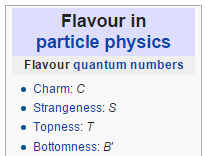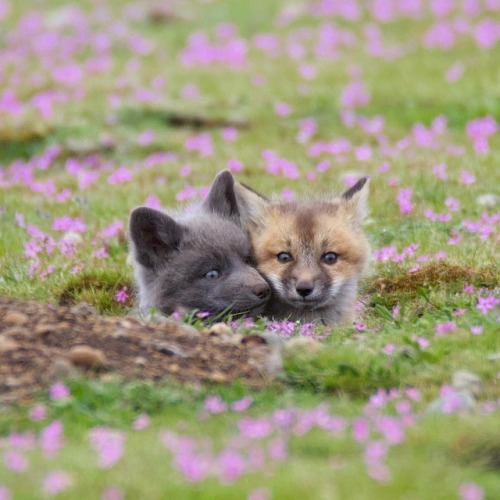In-pursuit-of-knowledge-blog - Everything Is Interesting!

More Posts from In-pursuit-of-knowledge-blog and Others

Southern sea otter recovery has come a long way, but there’s still work to be done. 🐾
Today's Men Carry Traces of Ancient Wars in Their Genes

Modern men’s genes suggest that something peculiar happened 5,000 to 7,000 years ago: Most of the male population across Asia, Europe and Africa seems to have died off, leaving behind just one man for every 17 women.
This so-called population “bottleneck” was first proposed in 2015, and since then, researchers have been trying to figure out what could’ve caused it. One hypothesis held that the drop-off in the male population occurred due to ecological or climatic factors that mainly affected male offspring, while another idea suggested that the die-off happened because some males had more power in society, and thus produced more children.
Now, a new paper, published May 25 in the journal Nature Communications, offers yet another explanation: People living in patrilineal clans (consisting of males from the same descent) might have fought with each other, wiping out entire male lineages at a time. Read more.

This cheery little butterflyfish has a big job. He’s charged with snacking on tiny nuisance aiptasia anemones that crop up on the rocks in the cuttlefish exhibit. Note: this little guy is very good at its job!
this is so rare!!! and it’s not albino, because its eyes are the usual color instead of pinkish- it’s the same gene that gives some moose white spots!
Nature spirit.
honey is the only food product that never spoils. there are pots of honey that are over five thousand years old and still completely edible

i want to play an rpg where these are my four stats
Solar System: 10 Things to Know
Movie Night
Summer break is just around the corner. Hang a sheet from the clothesline in the backyard and fire up the projector for a NASA movie night.
1. Mars in a Minute

Back in the day, movies started with a cartoon. Learn the secrets of the Red Planet in these animated 60 second chunks.
2. Crash of the Titans

Watch two galaxies collide billions of years from now in this high-definition visualization.
3. Tour the Moon in 4K

Wait for the dark of the waning Moon next weekend to take in this 4K tour of our constant celestial companion.
4. Seven Years of the Sun

Watch graceful dances in the Sun’s atmosphere in this series of videos created by our 24/7 Sun-sentinel, the Solar Dynamic Observatory (SDO).
5. Light ‘Em Up

Crank up the volume and learn about NASA science for this short video about some of our science missions, featuring a track by Fall Out Boy.
6. Bennu’s Journey

Follow an asteroid from its humble origins to its upcoming encounter with our spacecraft in this stunning visualization.
7. Lunar Landing Practice
Join Apollo mission pilots as they fly—and even crash—during daring practice runs for landing on the Moon.
8. Earthrise

Join the crew of Apollo 8 as they become the first human beings to see the Earth rise over the surface of the Moon.
9. Musical Descent to Titan

Watch a musical, whimsical recreation of the 2005 Huygens probe descent to Titan, Saturn’s giant moon.
10. More Movies

Our Goddard Scientific Visualization Studio provides a steady stream of fresh videos for your summer viewing pleasure. Come back often and enjoy.
Read the full version of this article on the web HERE.
Make sure to follow us on Tumblr for your regular dose of space: http://nasa.tumblr.com.
Can we talk? Starting a career in science communication
“Here is how science is relevant and has an impact on your life, and more importantly, here is how it can empower you.” ~ Mónica Feliú-Mójer
In this week’s featured podcast, “Sci on the Fly,” our own AAAS Science and Technology Policy fellow Allyson Kennedy interviews neurobiologist Mónica Feliú-Mójer, communications and science outreach director at Ciencia Puerto Rico.
We’ll let them take it from here: bit.ly/2ITDur3

Above: Mónica I. Feliú-Mójer delivering the keynote talk at the University of North Carolina STEM Diversity conference, Credit: Katherine Gale Stember Feliú-Mójer is also associate director for diversity and communication training at NSF-funded iBiology, where she produced a series of videos that is rethinking the narrative of “diversity in science”: https://goo.gl/3xmTET Below: Allyson Kennedy, Ph.D., a developmental biologist and 2017-18 Science & Technology Policy fellow at NSF, in The Dickinson Lab at Virginia Commonwealth University, where she did her graduate and postdoctoral work, Credit: Allyson Kennedy, Ph.D.
https://www.nsf.gov/od/oia/activities/aaasfellows/bios/kennedy.jsp


Above: Kennedy at Virginia Commonwealth University, where she led one arm of a multidisciplinary project investigating the effects of e-cigarettes on embryonic development, Credit: Leah Small, VCU Public Affairs https://www.aaaspolicyfellowships.org/ Below: Feliú-Mójer filming a segment for Univision that featured Latinxs in higher education. She is showing the camera the model organism she used for her PhD research, the nematode C. elegans, Credit: Mónica I. Feliú-Mójer, Ph.D

The real difference between us and chimpanzees is the mysterious glue that enables millions of humans to cooperate effectively. This mysterious glue is made of stories, not genes. We cooperate effectively with strangers because we believe in things like gods, nations, money and human rights. Yet none of these things exists outside the stories that people invent and tell one another. There are no gods in the universe, no nations, no money and no human rights—except in the common imagination of human beings.
Yuval Noah Harari (via mesogeios)
-
 amothtoflame liked this · 1 year ago
amothtoflame liked this · 1 year ago -
 theblabarmy reblogged this · 1 year ago
theblabarmy reblogged this · 1 year ago -
 sweetluxeaffair liked this · 2 years ago
sweetluxeaffair liked this · 2 years ago -
 nadjafsafarov liked this · 2 years ago
nadjafsafarov liked this · 2 years ago -
 littlebirdygirly liked this · 2 years ago
littlebirdygirly liked this · 2 years ago -
 arzomago liked this · 2 years ago
arzomago liked this · 2 years ago -
 languageswithraven liked this · 2 years ago
languageswithraven liked this · 2 years ago -
 allinllachuteruteru reblogged this · 2 years ago
allinllachuteruteru reblogged this · 2 years ago -
 allinllachuteruteru liked this · 2 years ago
allinllachuteruteru liked this · 2 years ago -
 b-plot-butch liked this · 2 years ago
b-plot-butch liked this · 2 years ago -
 ideasthatwillneverbepublished liked this · 2 years ago
ideasthatwillneverbepublished liked this · 2 years ago -
 capisback liked this · 2 years ago
capisback liked this · 2 years ago -
 marlasingercomplex-deactivated reblogged this · 2 years ago
marlasingercomplex-deactivated reblogged this · 2 years ago -
 tea-drinking-bitch liked this · 2 years ago
tea-drinking-bitch liked this · 2 years ago -
 inthewaytoamultilinguallife reblogged this · 2 years ago
inthewaytoamultilinguallife reblogged this · 2 years ago -
 ddaengksj reblogged this · 2 years ago
ddaengksj reblogged this · 2 years ago -
 ddaengksj liked this · 2 years ago
ddaengksj liked this · 2 years ago -
 alphabetsoupcomics reblogged this · 3 years ago
alphabetsoupcomics reblogged this · 3 years ago -
 momione-sama reblogged this · 3 years ago
momione-sama reblogged this · 3 years ago -
 momione-sama liked this · 3 years ago
momione-sama liked this · 3 years ago -
 zarahuntersstuff liked this · 3 years ago
zarahuntersstuff liked this · 3 years ago -
 suckdjdjjejfjdjejdjd liked this · 3 years ago
suckdjdjjejfjdjejdjd liked this · 3 years ago -
 mixed-fandom-mess liked this · 3 years ago
mixed-fandom-mess liked this · 3 years ago -
 queeryjelly liked this · 3 years ago
queeryjelly liked this · 3 years ago -
 cursedlcvers liked this · 3 years ago
cursedlcvers liked this · 3 years ago -
 your-local-ouiaboux liked this · 3 years ago
your-local-ouiaboux liked this · 3 years ago -
 thepossiblitiesareendless liked this · 3 years ago
thepossiblitiesareendless liked this · 3 years ago -
 natsumisan90 reblogged this · 3 years ago
natsumisan90 reblogged this · 3 years ago -
 natsumisan90 liked this · 3 years ago
natsumisan90 liked this · 3 years ago -
 lgbtomatoes liked this · 3 years ago
lgbtomatoes liked this · 3 years ago -
 giant-tardigayde liked this · 3 years ago
giant-tardigayde liked this · 3 years ago -
 bluetviolet liked this · 3 years ago
bluetviolet liked this · 3 years ago -
 ines-13 liked this · 3 years ago
ines-13 liked this · 3 years ago -
 ten-bees-in-a-trenchcoat liked this · 3 years ago
ten-bees-in-a-trenchcoat liked this · 3 years ago -
 genderfluidemo liked this · 4 years ago
genderfluidemo liked this · 4 years ago -
 nestarasikila liked this · 4 years ago
nestarasikila liked this · 4 years ago -
 theastrologiical liked this · 4 years ago
theastrologiical liked this · 4 years ago -
 blueparadisecollection16s liked this · 4 years ago
blueparadisecollection16s liked this · 4 years ago -
 forgottenspring liked this · 4 years ago
forgottenspring liked this · 4 years ago -
 peanut-gallery92 liked this · 4 years ago
peanut-gallery92 liked this · 4 years ago
Once I was made of stardust. Now I am made of flesh and I can experience our agreed-upon reality and said reality is exciting and beautiful and terrifying and full of interesting things to compile on a blog! / 27 / ENTP / they-them / Divination Wizard / B.E.y.O.N.D. department of Research and Development / scientist / science enthusiast / [fantasyd20 character]
162 posts
